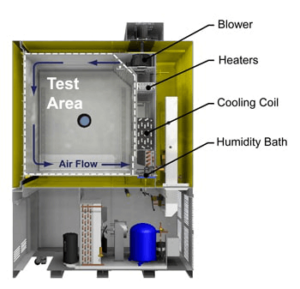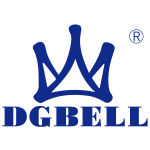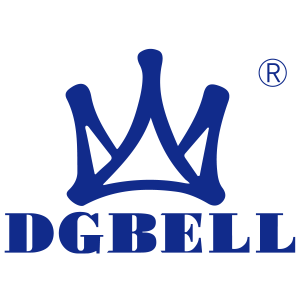Environmental Chamber Basics and Benefits of Environmental Testing
DGBELL is one of the largest manufacturers of environmental test chambers worldwide. First I will go over a few key terms associated with reliability testing. Design validation, products. Validation, environmental stress screening, and product lifecycle testing are four of the most popular tests used for environmental testing.
Common Specifications of Environmental Testing
Common Specifications of Environmental Testing
The procedure is called an aggravated cycle. The cycle begins with 95% relative humidity at 30 degrees Celsius. Then it heats up to 60 degrees celsius. The temperature stays at 60 degrees Celsius for six hours.
Next, we cool down to thirty degrees celsius and so get that temperature for four hours. After that, we turn the product on and allow it to soak at the same temperature for another four hours. Notice that we maintain a 95 percent relative humidity throughout the entire cycle. After this first cycle is complete 24 hours total it is ready to be repeated.
The layout of a Typical Environmental Test chamber
The layout of a Typical Environmental Test chamber

We’ll go over the environmental test chamber on the left starting clockwise with the serial communications panel you’ll find the control system. Right above it next on the top right is where chamber pressures are released. Through the exhaust port is an entry port that allows wires and thermocouples to be placed on the product under test and connected to an external data acquisition device. Lastly, casters allow for easy chamber maneuvering turning to the chamber on the right.
Let’s start from the top now looking to the inside of the chamber. You will see two lights are allowing visual access to the inside of the environmental test chamber. You will find the moveable product temperature control thermocouple, an electronic to humidity sensor, and an air baffle that supplies the air over the product under test.
The control thermocouple is also located on the ceiling; the white arrows represent the airflow as it is directly distributed over the product and the air returns from the chamber floor. The humidity system is located on the right side cabinet and the compressors and condensers are housed in the front cabinet now.
Definitions of Components Used Inside Test Chamber
Definitions of Components Used Inside Test Chamber
- Thermocouple
A thermocouple is a movable device that measures temperature product temperature control maximizes stress on the product through the chambers.
- Temperature Control Vs. Airstream Control
Control system and optimized airflow air stream control measure the air temperature at the outlet source of the air supply. Product temperature control measures the product’s temperature.
- Cascade Vs. Single Stage Refrigeration
Cascade refrigeration systems consist of two compressors that allow the chamber to go to minus 70 degrees Celsius single-stage refrigeration consists of one compressor that allows the chamber to typically go to minus 40 degrees Celsius.
- Air Cooled Vs. Water Cooled Condenser
The environmental test chamber’s refrigeration system can be cooled in one of three ways. Chambers with six horsepower compressors are smaller and can be cooled with onboard air or a water-cooled condenser.
Chambers with six horsepower compressors or larger can be cooled with either water-cooled or remote air-cooled condensers. Remote air-cooled condensers are typically placed outside either on top of the facility or the ground. The purpose of all condensers is to draw the heat away from the compressors and other refrigeration system components.
- Dry Air Purge or Gaseous Nitrogen Purge
The dry air purge alternative empowers reduced moisture functioning at low temperatures. The machine is made up of a flow meter controller and regulator solenoid complete application. It uses compressed air as the source and is extremely useful in reducing moisture from the room. Gaseous nitrogen is another alternative to dry air purge; it aims to reduce the environmental test chamber’s moisture level.
- Liquid nitrogen boost with an oxygen monitor
Liquid nitrogen boost enables faster pull-downs and dissipation of heat from the product. An oxygen monitor or monitors can be added to the chamber or test lab to monitor oxygen levels. It also features an alarm if a depleted oxygen environment exists.
- Electronic Humidity Sensor Vs. Wet-bulb
Basic humidity systems have a few components. An electronic humidity sensor gives high-quality responses and is very accurate at low humidity levels. It does not require as much maintenance as a wet-bulb dry bulb system, which may require frequent wick replacements and a humidity system that can be clogged with dirty water from the test.
- Steam Generator Vs.Water Bath
The steam generator produces high volumes of moisture and water vapor consistency which is good for transitions. The water bath system can’t generate high volumes of moisture and has poor low humidity control due to the water in the bath.
Benefits of Environmental Testing and Test Chambers for Industries
Benefits of Environmental Testing and Test Chambers for Industries
It’s necessary to check products for reliability before releasing components into manufacturing, ensuring that products may reliably withstand different environmental problems. It’ll reduce costs related to recalls and warranties. Item testing may also provide you a competitive edge since it aids in designing and producing a more robust product. So the item is prepared for consumer use.
Reliability testing also helps customers meet supplier prerequisites. The most typical forms of environmental testing comprise humidity and temperature. This guide is going to concentrate on other common kinds of testing, including elevation and vibration tests.
- Design validation Testing
Product design is validated to ensure the basic functionality remains smooth in the normal environment. It will encounter during its life cycle in a specification driven and can be done in the R&D phase. During the production phase, the goal is to pass the test and meet the specification without any failures and the result is a robust product.
- Product Validation
The purpose of product validation is to ensure that the product meets the requirements specifications and regulations for which it is intended. The product validation procedure uses simulations similar to those of design validation to foresee faults or gaps in the design or manufacturing stages that might cause failures.
- Environmental Stress Screening
When customers utilize the merchandise, environmental stress screening employs an assortment of unique stresses like thermal cycling to induce latent defects. In recently manufactured or repaired products or components (usually digital), the potential for failure means catastrophic consequences. The living components or products are supposed to have more excellent reliability compared to a comparable unscreened population.
- Product Lifecycle Testing
You will find producers for these four kinds of evaluations by simulating real field surroundings such as humidity and temperature. Many products undergo conventional testing processes, which are frequently accepted by the army, IEC, UL.
A few significant markets environmental test chambers and make a profit from product reliability testing. The markets do testing for the protection of their products such as aerospace, consumer electronics, automotive, etc. Any electronics Will requires testing to make sure it will correctly work in virtually any climate and experiences.





